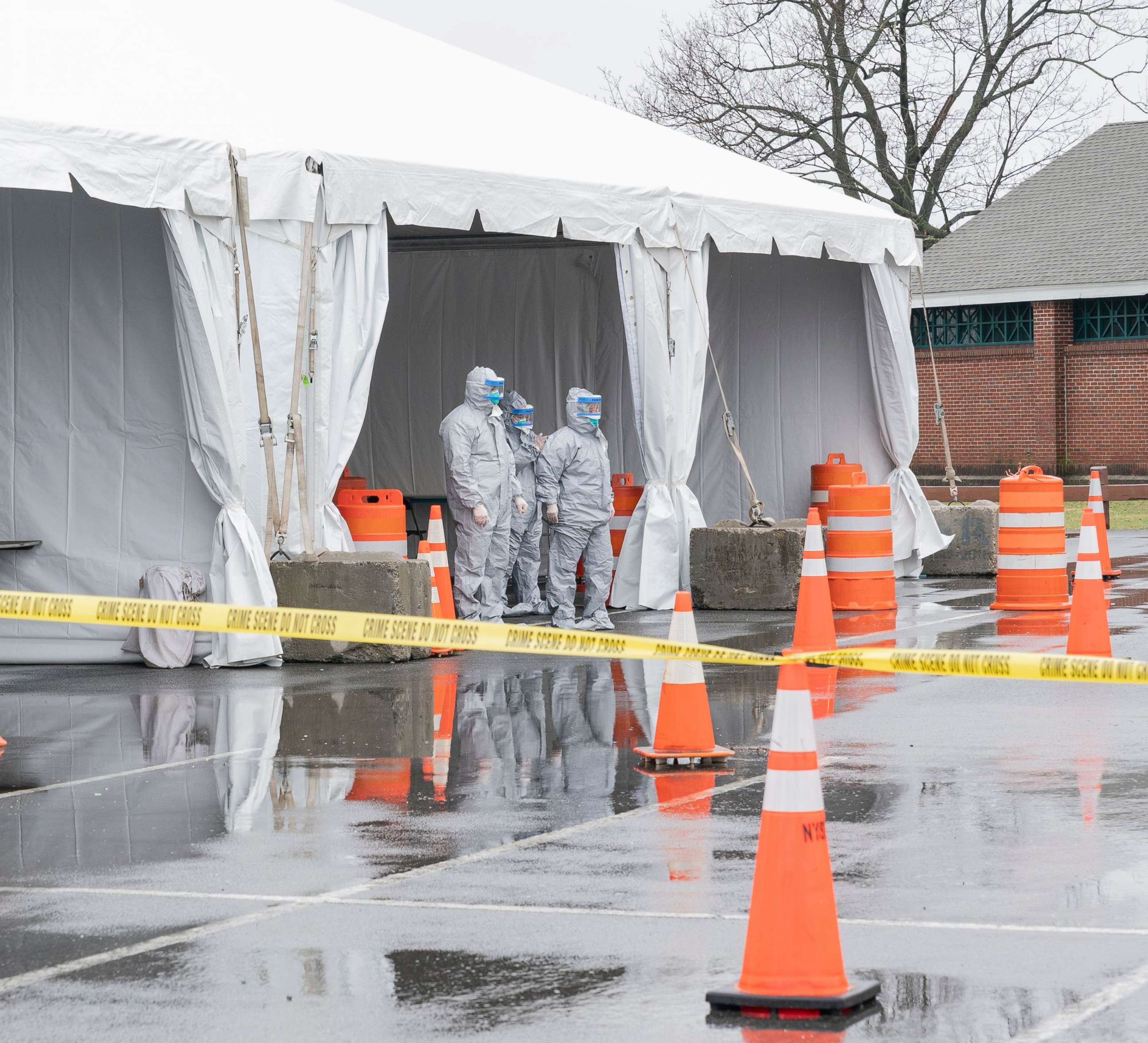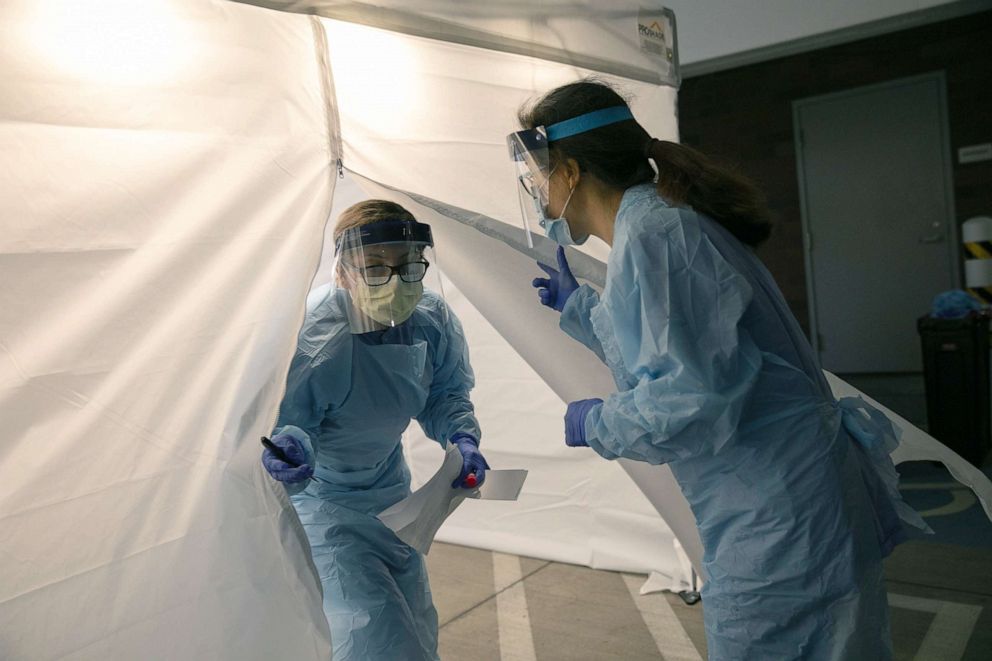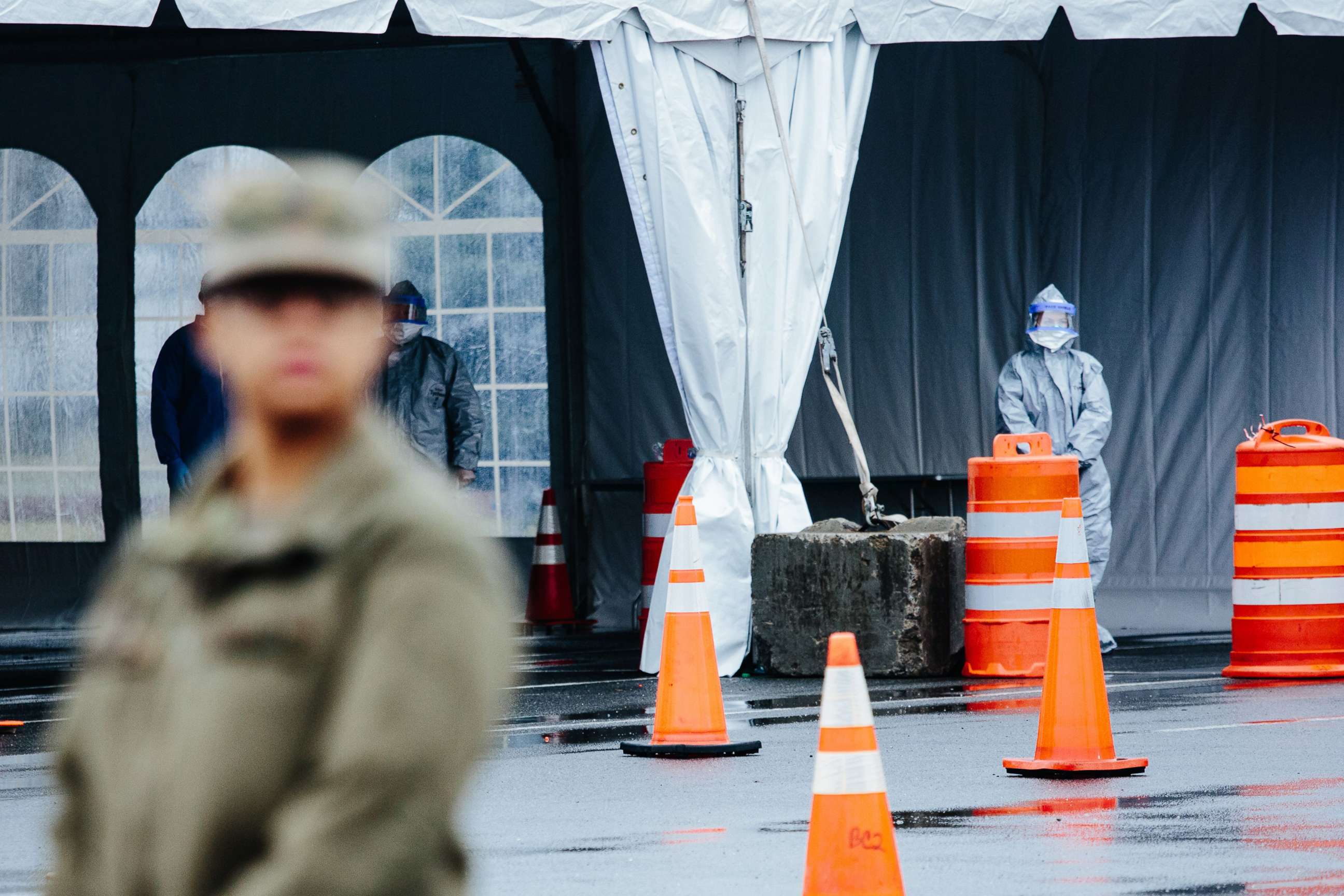State public health cuts hamper coronavirus containment: Experts
Containment efforts have been hampered by local budget cuts.
For years, health experts said state governments didn’t do enough to bolster their public health offices and services. Now they are struggling to catch up as COVID-19 spreads through their communities.
Most state and local governments put public health on the back burner when it comes to their priorities and in some cases, reduce the amount dedicated to those offices, according to Dr. Georges Benjamin, the executive director at the American Public Health Association. Benjamin, a former secretary of the Maryland Department of Health, said these cuts left many states in a weakened position to fight the coronavirus outbreak.
“Public health, from a funding perspective, is a weak link of the system. We throw money at it when the crisis comes, but usually, it’s not enough and it’s too late,” he told ABC News.
What to know about Coronavirus:
- How it started and how to protect yourself: Coronavirus explained
- What to do if you have symptoms: Coronavirus symptoms
- Tracking the spread in the US and Worldwide: Coronavirus map
While the federal government’s $8 billion emergency coronavirus funding gives states a shot in the arm when it comes to their detection, containment and treatment options, Benjamin and other experts hope the crisis will push elected officials to fill the cracks in local public health operations.
The nonprofit group the “Trust for America’s Health” published a report in February that analyzed the status of the country’s public health system. It found that some states were weaker than others when it came to handling a health disaster. Eleven states, including Alabama, New York and North Carolina, reduced their public health funding between the 2018 and 2019 fiscal years, according to the report.

John Auerbach, Trust for America’s Health’s CEO who served as the health commissioner for both Boston and Massachusetts, told ABC News the cuts lead to more turnover in public health departments and that a drop in personnel, especially epidemiologists, delays containment. Roughly 56,000 public health jobs were lost between 2008 and 2017, according to a survey by the de Beaumont Foundation, a health nonprofit.
“You’ve got to have people who have the right skills and been on the front lines for a while,” Auerbach said. “In a situation like the current one, the epidemiologists will work a lot of long hours, but after a while, they get burned out.”

Benjamin said the states with the most coronavirus cases, like Washington and New York, have taken an active approach despite their limited resources, with actions such as increased testing and limits on mass gatherings.
“When the rubber hits the road what matters is what’s going on in the states and local government,” he said.
As the virus continues to spread, the states will need a clear message and plan from the federal government, according to Dr. Irwin Redlener, a clinical professor of health policy at Columbia University’s Mailman School of Public Health. Each state’s coronavirus policies are slightly different. For example, some states ban gatherings of more than 500 people while others ban over 250 people, which has been confusing the public, he said.
“We don’t need the government to do 50 different experiments on how to handle this,” Redlener told ABC News.

In the short term, Redlener said the federal government would fast-track its money, resources, and most importantly tests, to the states and come up with a detailed national battle plan to contain the virus. The long-term effects on state public health offices and programs are still murky, according to Redlener.
In the past, the federal government and state legislatures have cut back on their public health funding shorty after health crises have been resolved, like during the H1N1 outbreak in 2009 and the Ebola outbreak in 2014, according to Redlener.
“We call these things wake up calls…but it’s more of a snooze alarm,” he said. “Once the crisis is over we hit the snooze button and go back to our regular funding and attention.”
Auerbach also acknowledged the back-and-forth funding problems but said the current situation has already pushed federal, state and local lawmakers to consider policies that bolster public health at the local level.
“We need to think about public health the same way we think about firefighters and police officers,” he said. “That will reduce the amount of money that is spent during emergencies.”




